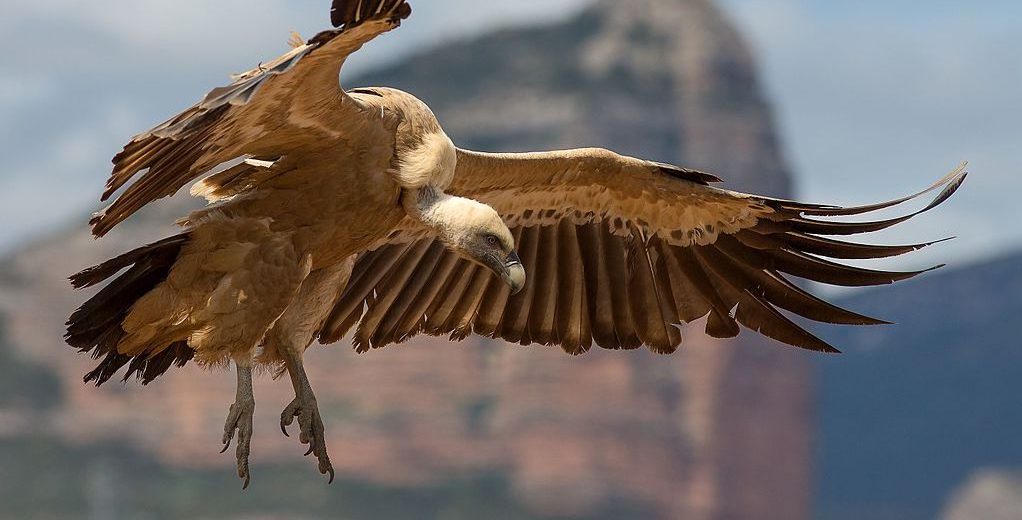
The griffon vulture, aka Eurasian griffon or Eurasian griffon vulture, can be found in Europe, Africa, and Asia. They prefer plateaus, shrublands, grasslands, mountains, and semi-deserts, and tend to gravitate towards warmer climates. But they can also tolerate rain, mist, cold, and snow, if it means they have access to prime breeding and feeding sites. Due to their population, an estimated 900,000, and their increasing numbers, these birds are listed as Least Concern by the IUCN.
First the Stats…
Scientific name: Gyps fulvus
Weight: Up to 25 lbs.
Length: Up to 4 feet
Wingspan: Up to 9.2 feet
Lifespan: Up to 41 years
Now on to the Facts!
1.) Griffon vultures are diurnal (active during the day), like other vultures.
2.) A group of vultures is called a committee, kettle, or wake.
3.) They search for carrion (dead animals) by circling high in the sky. When 1 bird finds a source of food it will circle lower and then land to feast. This usually signals others to fallow suit.
4.) The griffon vulture is relatively vocal and emits a series of calls and hisses.
5.) When another bird comes too close, they will produce a wooden chattering sound.
But wait, there’s more on the griffon vulture!
6.) These scavengers feed solely upon the soft tissue from carcasses of medium to large fallen prey.
7.) They are monogamous (mate for life).
Did you know…?
Griffon vultures have been recorded flying at altitudes of up to 36,000 feet!
8.) Griffons breed in colonies of up to 150 pairs.
9.) Nests are made from sticks, twigs, and grasses and built on cliff sides and ledges that are intentionally difficult for humans to reach.
10.) Females lay 1 egg that hatches in up to 60 days.
But wait, there’s still more on the griffon vulture!
11.) Chicks are born helpless and nearly bald, sans a few down feathers, and take up to 60 days to don their full feathers.
12.) After 4 months, the chick is able to fly, but still depends on mom and dad for regurgitated meals.
Did you know…?
It takes around 50 vultures up to 20 minutes to completely strip a medium sized carcass to just skin and bones.
13.) Some threats these birds face are accidental poisoning, from poisoned carcasses left out to control predator populations; shooting; electrocution from power lines; and starvation, due to better hygiene and veterinary care delivered to livestock (thus keeping the livestock alive longer).
14.) They may seem dirty, but they spend a fair amount of time, near water holes, bathing and preening themselves.
15.) There are 23 recognized species of vultures; with 16 Old World vultures (those from Europe, Africa, and Asia) and 7 New World species (those from North, Central, and South America).
But wait, there’s still a little more on the griffon vulture!
16.) Kind of fortunately, vultures have a poor sense of smell. But very keen eyesight. They can spot a fallen animal up to 4 miles away.
17.) Like other vultures, they have evolved a lack of feathers on their head and neck. Instead having just fine, short down. This aids in ease of cleaning after a messy meal and helps to prevent disease when sticking their head into a rotting carcass.
Now a Short Griffon Vulture Video!
Be sure to share & comment below! Also, check out the Critter Science YouTube channel. Videos added regularly!
Want to suggest a critter for me to write about? Let me know here.
Think you know a lot about critters? Try your hand at these fun, free quizzes:
Photo credit: Pierre Dalous



